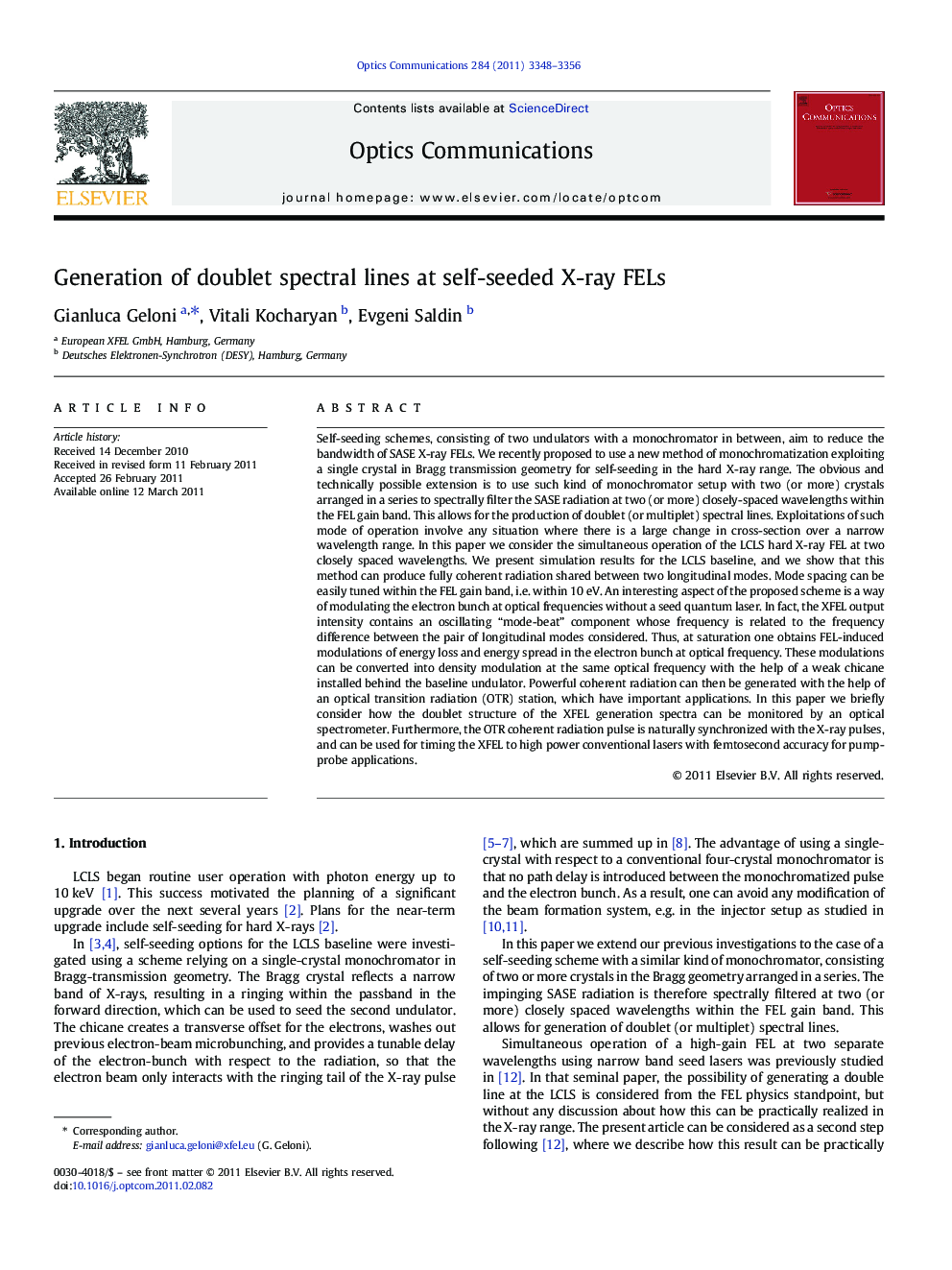| Article ID | Journal | Published Year | Pages | File Type |
|---|---|---|---|---|
| 1537289 | Optics Communications | 2011 | 9 Pages |
Self-seeding schemes, consisting of two undulators with a monochromator in between, aim to reduce the bandwidth of SASE X-ray FELs. We recently proposed to use a new method of monochromatization exploiting a single crystal in Bragg transmission geometry for self-seeding in the hard X-ray range. The obvious and technically possible extension is to use such kind of monochromator setup with two (or more) crystals arranged in a series to spectrally filter the SASE radiation at two (or more) closely-spaced wavelengths within the FEL gain band. This allows for the production of doublet (or multiplet) spectral lines. Exploitations of such mode of operation involve any situation where there is a large change in cross-section over a narrow wavelength range. In this paper we consider the simultaneous operation of the LCLS hard X-ray FEL at two closely spaced wavelengths. We present simulation results for the LCLS baseline, and we show that this method can produce fully coherent radiation shared between two longitudinal modes. Mode spacing can be easily tuned within the FEL gain band, i.e. within 10 eV. An interesting aspect of the proposed scheme is a way of modulating the electron bunch at optical frequencies without a seed quantum laser. In fact, the XFEL output intensity contains an oscillating “mode-beat” component whose frequency is related to the frequency difference between the pair of longitudinal modes considered. Thus, at saturation one obtains FEL-induced modulations of energy loss and energy spread in the electron bunch at optical frequency. These modulations can be converted into density modulation at the same optical frequency with the help of a weak chicane installed behind the baseline undulator. Powerful coherent radiation can then be generated with the help of an optical transition radiation (OTR) station, which have important applications. In this paper we briefly consider how the doublet structure of the XFEL generation spectra can be monitored by an optical spectrometer. Furthermore, the OTR coherent radiation pulse is naturally synchronized with the X-ray pulses, and can be used for timing the XFEL to high power conventional lasers with femtosecond accuracy for pump-probe applications.
Research Highlights► Self seeding scheme with single crystal monochromators is further studied. ► This scheme promises nearly Fourier-limited SASE XFEL pulses. ► Using two (more) crystals a doublet (multiplet) X-ray pulse can be produced. ► Powerful coherent radiation pulses in the optical range will also be created. ► The pulses of optical radiation are automatically synchronized with the X-ray pulses.
